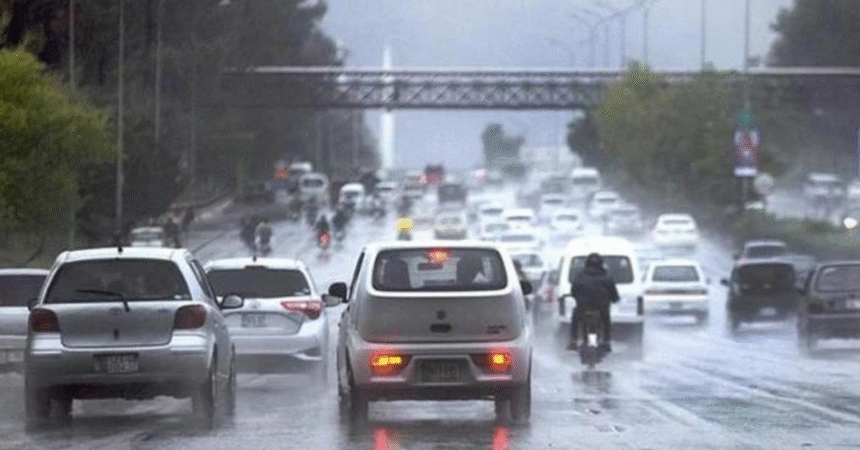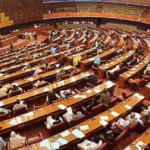The Provincial Disaster Management Authority (PDMA) of Punjab has recently issued a comprehensive weather alert, forecasting widespread rain coupled with strong winds and thunderstorms across various districts in the province. With weather conditions predicted to start on October 5 and extend until October 8, authorities are urging residents to remain vigilant and take necessary precautions.
Overview of the Weather Forecast
The upcoming weather system is anticipated to significantly affect several districts, including Lahore, Rawalpindi, Murree, Galiyat, Attock, Chakwal, Jhelum, and Mandi Bahauddin. According to meteorological experts, this weather event is likely to bring not only heavy rainfall but also the possibility of urban flooding, which could disrupt daily life and pose risks to public safety.
Meteorological Insights
Meteorologists have been monitoring weather patterns that suggest a strong disturbance in the atmosphere, leading to this significant rainfall event. The presence of a low-pressure system combined with moisture-laden winds is expected to cause substantial precipitation. Local meteorological departments have advised residents in the affected areas to prepare for the potential impacts, which could include power outages, transportation disruptions, and damage to property.
Impacts of Heavy Rainfall
Urban Flooding
One of the most pressing concerns with heavy rainfall is the risk of urban flooding, especially in densely populated areas like Lahore and Rawalpindi. Urban flooding occurs when rainfall exceeds the capacity of drainage systems, leading to water accumulation on streets and in residential areas. This situation can create hazardous conditions for commuters and pedestrians, complicating rescue operations and emergency responses.
Emergency Services Preparedness: The PDMA has emphasized the readiness of emergency services such as Rescue 1122. With the forecasted heavy rains, these services are on high alert to manage any emergencies that arise. The readiness involves not just response teams but also equipment and resources to handle flooding and potential evacuations if necessary.
Infrastructure Strain
Heavy rain can put immense strain on existing infrastructure, especially in areas where drainage systems are outdated or poorly maintained. This strain can lead to road damage, collapsed structures, and interruptions in public transportation. Authorities are urged to take immediate measures to inspect and maintain infrastructure to minimize these risks.
Public Transportation: Disruptions in public transportation can be particularly challenging during adverse weather conditions. The authorities are advised to monitor public transit routes and ensure that they are safe for travel. Information about service delays and alternative routes should be communicated effectively to the public.
Agricultural Impacts
Agriculture is another sector that may be significantly affected by heavy rainfall. While crops generally benefit from water, excessive rainfall can lead to waterlogging, crop damage, and soil erosion. Farmers in the affected districts are encouraged to take precautions to protect their fields, including ensuring proper drainage.
PDMA’s Proactive Measures
In light of the impending weather conditions, the PDMA has been proactive in issuing warnings and preparing local administrations to handle the situation effectively. Director General Irfan Ali Kathia has called for heightened vigilance and preparedness across the province.
Monitoring and Assessment
The PDMA has implemented a 24/7 monitoring system through its control room. This continuous assessment will enable officials to track the storm’s progression and its potential impacts on various districts. The data collected will inform response strategies and resource allocation.
Coordination with Local Governments
All deputy commissioners (DCs) and local administrations have been instructed to coordinate with PDMA to ensure a comprehensive response to the severe weather. This collaboration is crucial for effective communication with the public and the swift mobilization of resources.
Community Engagement: Engaging local communities in preparedness measures is essential. The PDMA encourages local officials to conduct awareness campaigns to educate residents about potential risks and safety measures. This could involve distributing pamphlets, holding community meetings, and utilizing social media platforms to spread information quickly.
Safety Recommendations for Residents
With the forecast of heavy rain and thunderstorms, residents in the affected districts are advised to take specific precautions to safeguard themselves and their property.
Preparation Steps
1. Stay Informed: Regularly check weather updates from reliable sources, including the PDMA and local meteorological services. Awareness of changing conditions is vital for making informed decisions.
2. Secure Property: Ensure that outdoor items such as furniture, potted plants, and decorations are either secured or brought indoors to prevent damage from strong winds.
3. Avoid Travel: If possible, limit travel during severe weather. If travel is necessary, plan routes that avoid known flood-prone areas.
4. Emergency Supplies: Prepare an emergency kit that includes essential items such as food, water, medications, flashlights, and batteries. This kit should be readily accessible in case of power outages or other emergencies.
5. Stay Indoors During Storms: When thunderstorms occur, it is safest to remain indoors, away from windows and doors. If you are outside, seek shelter immediately.
Community Preparedness
Communities should also come together to ensure collective safety. Neighbors can assist each other by checking on vulnerable individuals, such as the elderly or those with disabilities, ensuring that they have what they need to remain safe during the storm.
Long-Term Strategies for Flood Management
The recurring issue of flooding during monsoon seasons in Punjab highlights the need for long-term strategies to manage water flow and enhance urban infrastructure. Some potential strategies include:
Improving Drainage Systems
Investing in modern drainage infrastructure can significantly reduce the risk of urban flooding. Upgrading existing systems to handle higher volumes of water will be essential as climate patterns continue to change.
Flood Awareness Programs
Educational programs focused on flood awareness can equip residents with the knowledge needed to respond effectively during severe weather events. These programs can include workshops on emergency preparedness, evacuation plans, and first aid.
Green Infrastructure
Incorporating green infrastructure, such as rain gardens and permeable pavements, can help absorb excess rainwater and reduce runoff. These solutions not only manage water flow but also enhance urban aesthetics and biodiversity.
As Punjab braces for heavy rain and thunderstorms starting from October 5, the proactive measures implemented by the PDMA and local administrations will be crucial in ensuring public safety. By staying informed, taking personal precautions, and working together as a community, residents can navigate the challenges posed by adverse weather conditions. Additionally, the long-term strategies discussed will help mitigate the impacts of future storms, promoting resilience in the face of changing climate patterns.
#PunjabWeather #HeavyRain #Thunderstorm #UrbanFlooding #PDMA #PublicSafety







